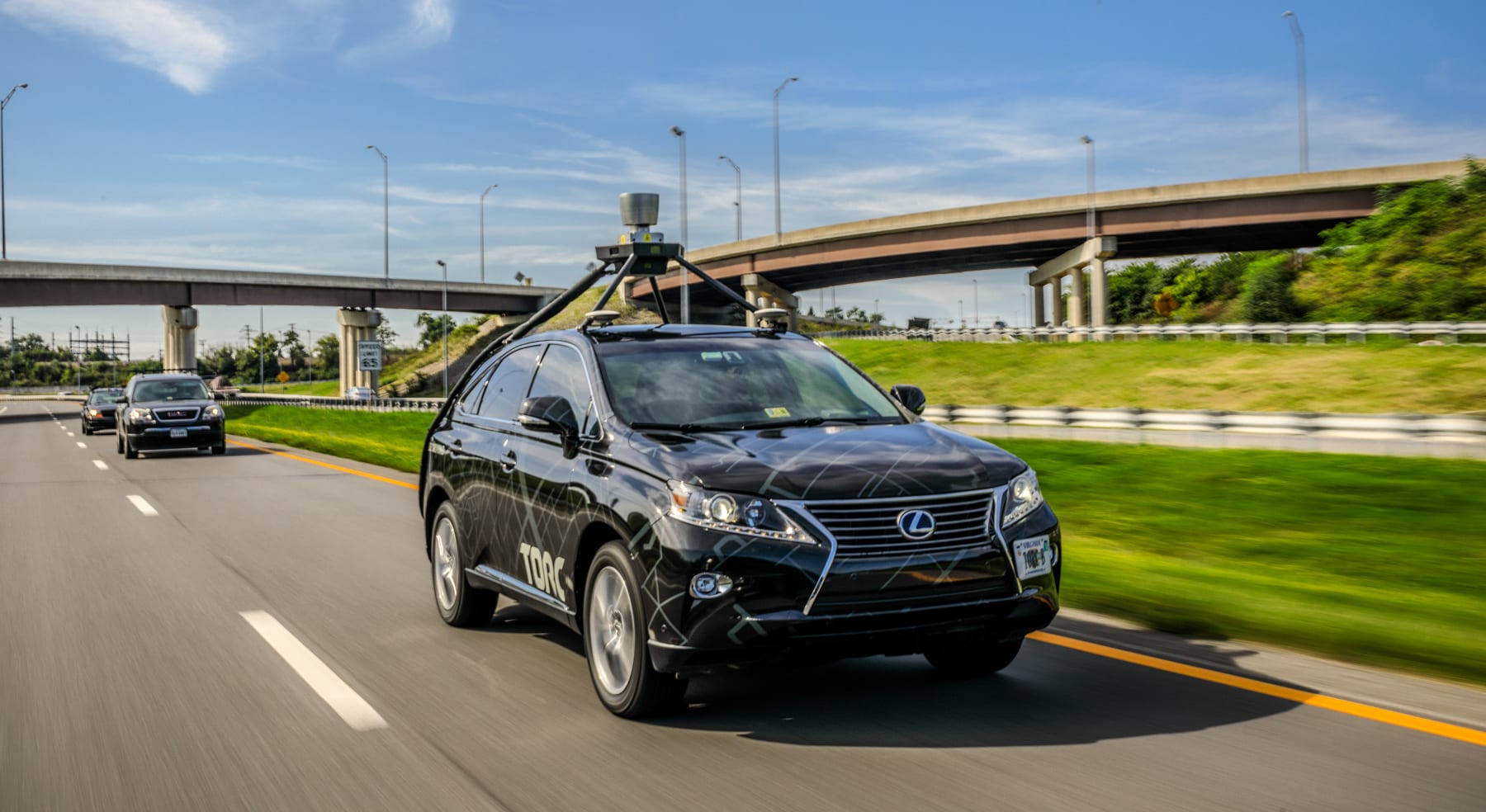Originally published in 2017, this article explored the ins-and-outs of Torc Robotics’ self-driving journey. From solar eclipses to encountering the unexpected, we’ve told countless stories about our autonomous car outlook. In 2019, we made the shift towards a new prospect in self-driving technology: driverless semi-trucks. Alongside our OEM partner, Daimler Truck, we’re creating the future of freight: a Level 4 autonomous semi-truck, built straight into the Freightliner Cascadia. For more about these self-driving big rigs, check out our newsroom.
Solar eclipses are rare and incredible events. As the sun embarks on its journey across the cosmic landscape, the moon’s shadow blocks out its light for a few brief moments. Although most of us have watched these once-a-year events with sunglasses in tow, we probably haven’t thought about how these events might affect some of our newest pieces of technology, like our driverless cars.
At Torc, we’re excited to say that we’ve officially tested our self-driving car software in the midst of a solar eclipse. In 2017, during a 91% eclipse, our automated vehicle drove through highway and urban environments alike to test out the software’s capabilities.
While solar eclipses are rare, they can provide valuable opportunities to test how our technology performs during irregular changes in lighting. Self-driving cars must be capable of entering or exiting a tunnel, detecting traffic lights in direct sunlight, encountering high beam headlights at night from oncoming traffic, and more. Lighting conditions can be highly variable and can change in an instant, meaning that our driverless technology must be up to all kinds of challenges.
“We’re constantly testing our cars in challenging environments while working with our commercialization partners to reduce the 1.2-million traffic fatalities a year,” says Torc Founder Michael Fleming. “This is one of the many corner cases that we must address to make self-driving technology commonplace in society.”
Earlier in 2017, Torc completed 4,300 autonomous miles in its coast-to-coast self-driving trip from Washington, D.C., to Seattle, Washington, and back to Richmond, Virginia. Torc’s self-driving vehicles performed incredibly, whether they were in West Virginia’s mountainous landscape in heavy rain or the straight and flat plains of the dry Midwest.
“Since our success in the DARPA Urban Challenge, we have spent more than a decade building upon our multi-modal sensor technology to solve self-driving challenges with OEMs [Original Equipment Manufacturers],” says Fleming. “Human drivers and camera systems have difficulty staring into the sun. By integrating other sensors such as radar and LIDAR, we create a robust perception system.”
In addition to testing our self-driving car software during a solar eclipse, Torc Robotics has also accomplished a remarkable feat in autonomous driving. In 2017, our self-driving vehicles embarked on an epic coast-to-coast journey, covering a total of 4,300 miles from Washington, D.C., to Seattle, Washington, and back to Richmond, Virginia. Despite the vast and varying conditions between these locations, Torc’s self-driving technology demonstrated exceptional performance and reliability, solidifying our expertise in the field of autonomy.

